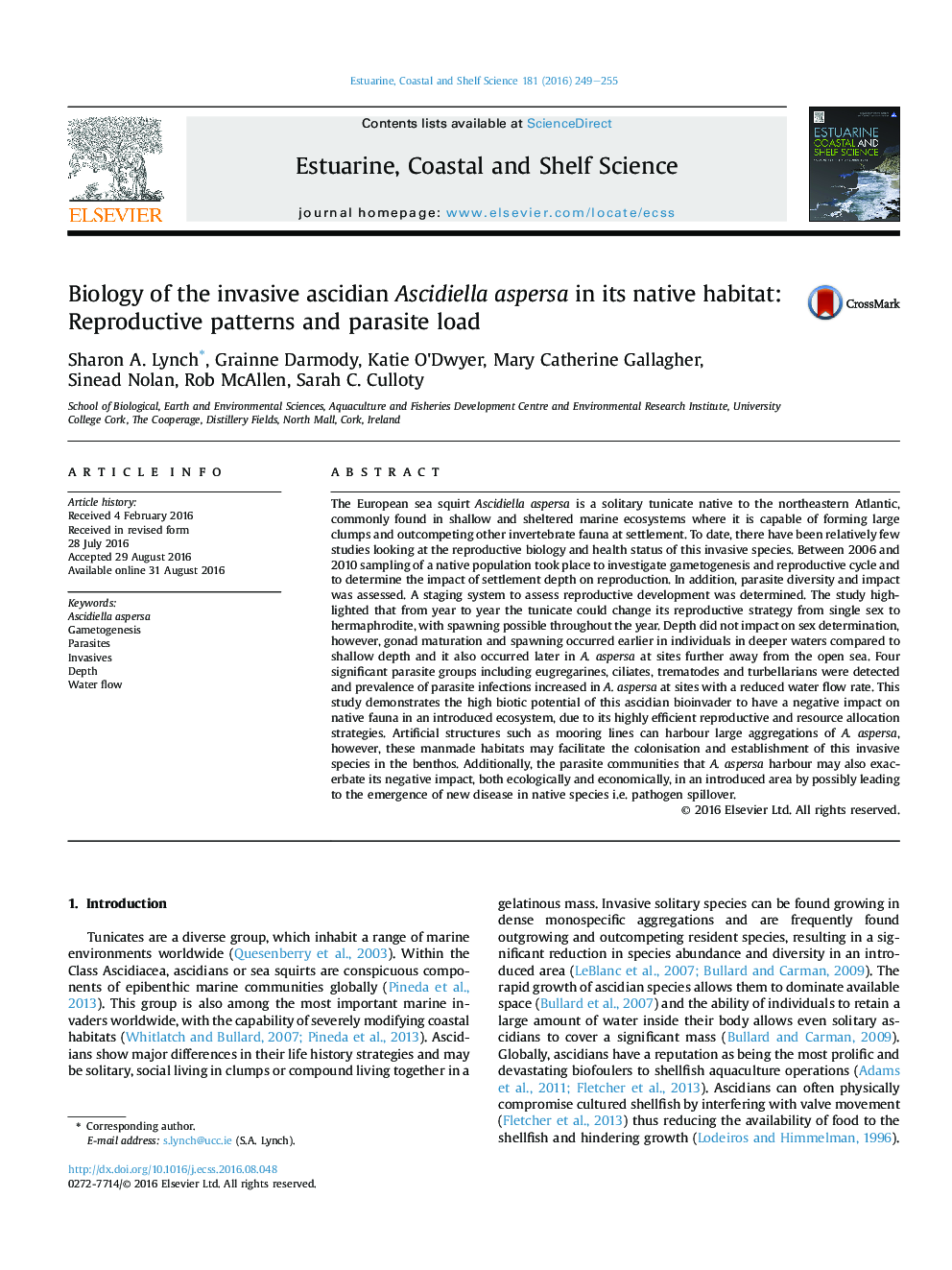| Article ID | Journal | Published Year | Pages | File Type |
|---|---|---|---|---|
| 4539143 | Estuarine, Coastal and Shelf Science | 2016 | 7 Pages |
The European sea squirt Ascidiella aspersa is a solitary tunicate native to the northeastern Atlantic, commonly found in shallow and sheltered marine ecosystems where it is capable of forming large clumps and outcompeting other invertebrate fauna at settlement. To date, there have been relatively few studies looking at the reproductive biology and health status of this invasive species. Between 2006 and 2010 sampling of a native population took place to investigate gametogenesis and reproductive cycle and to determine the impact of settlement depth on reproduction. In addition, parasite diversity and impact was assessed. A staging system to assess reproductive development was determined. The study highlighted that from year to year the tunicate could change its reproductive strategy from single sex to hermaphrodite, with spawning possible throughout the year. Depth did not impact on sex determination, however, gonad maturation and spawning occurred earlier in individuals in deeper waters compared to shallow depth and it also occurred later in A. aspersa at sites further away from the open sea. Four significant parasite groups including eugregarines, ciliates, trematodes and turbellarians were detected and prevalence of parasite infections increased in A. aspersa at sites with a reduced water flow rate. This study demonstrates the high biotic potential of this ascidian bioinvader to have a negative impact on native fauna in an introduced ecosystem, due to its highly efficient reproductive and resource allocation strategies. Artificial structures such as mooring lines can harbour large aggregations of A. aspersa, however, these manmade habitats may facilitate the colonisation and establishment of this invasive species in the benthos. Additionally, the parasite communities that A. aspersa harbour may also exacerbate its negative impact, both ecologically and economically, in an introduced area by possibly leading to the emergence of new disease in native species i.e. pathogen spillover.
